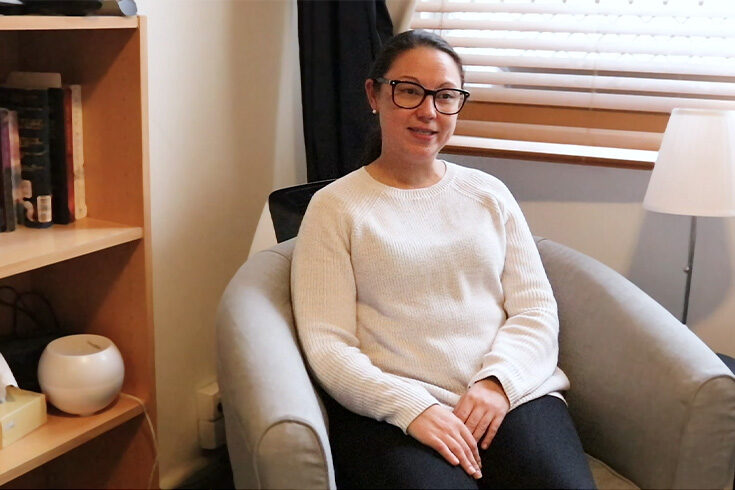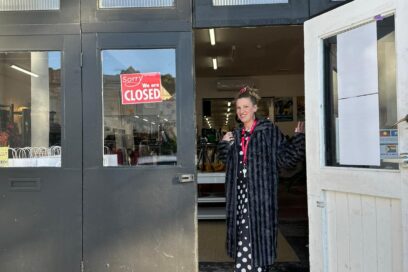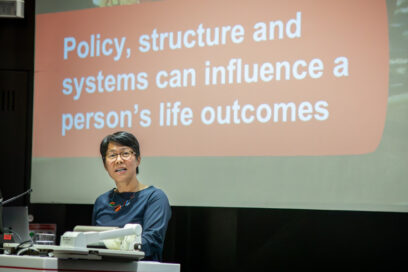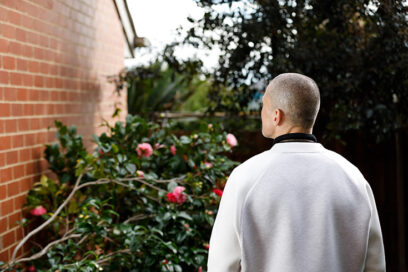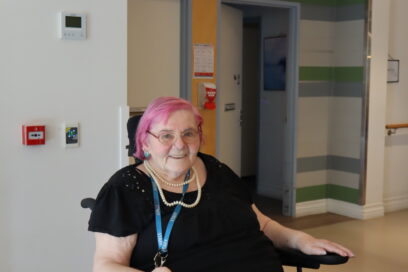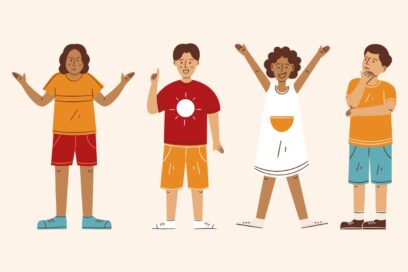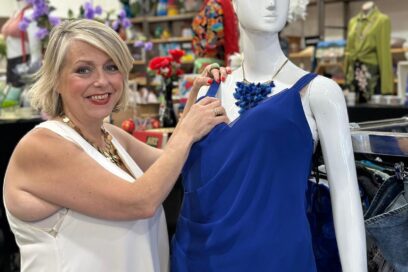“Watching someone receive their keys to their new house is what I enjoy most about my job,” Regina Wloch says.
Regina has worked with Sacred Heart Mission for more than six years, including as an Intensive Case Manager for the Journey to Social Inclusion (J2SI) program – a proven, innovative, rapid housing solution to ending homelessness.
As a J2SI Intensive Case Manager, staff members such as Regina, work with people on their personal goals such as finding stable employment or reconnecting them with the community, which means every day is different.
On the day we caught up with Regina to learn about her job, she was out at the far edges of the Melbourne’s northern suburbs at a unique property that offers equine-therapy. Something that includes a range of treatments involving activities with horses and other equines to promote human physical and mental health.
Describe a day in the life of a J2SI Case Manager
We generally have six to 10 participants we are working with at any time. At the start of J2SI’s program in 2015, a lot of the people who we work with and had been referred to us where in fact sleeping rough. Some were sleeping around St Kilda, a couple were sleeping on the steps of the Mission at Grey Street. I spend time connecting with them. As all of our work is outreach based it’s important to build trust and start building that long-term relationship.
As we have moved further through the program I would say half my day is spent in the office, completing notes, calling services, arranging appointments and organising support. For example, if I have a client who I know is not up to early morning appointments, and it is difficult to contact him until 1pm, I make sure he is connecting with the services he needs in the afternoon.
What do you enjoy about being a J2SI Case Manager?
J2SI works to get people into housing as the first priority whenever possible. Sleeping rough means you are in straight-up survival mode; where am I going to sleep? where am I going eat? Am I going to get any money today? Am I safe? How do I protect my stuff? These kinds of worries take up all their time, there is no room for anything else. Life without housing can be very chaotic.
To then watch someone I am working with receive keys to their own place and seeing the hope in their face- it’s amazing. They are overwhelmed and excited by the possibilities all at the same time. Then I get to help them “nest”; buy things for their home and I can see them understand they have a stable base and that I’m hanging around to help them.
What are the benefits of working with someone longer?
At the moment most programs provide about three to six months of support. The caseload is much bigger, it can be as high as 15 to 20 clients at a time, it’s very paperwork based and meeting focused.
Working long-term with a client, we are privileged to get an in-depth picture of our clients, learning their triggers and building trust over time.
This information is important in support planning with partner agencies. This means clients get the best outcome from those services as well. This established trust allows work on longer-term issues as they can see that working together progresses their identified goals.
We support people to build structure into their life. They are then able to repurpose those survival skills that they developed over a lifetime so that when they are no longer in the J2SI program, they are confident they stay stable.
How did you end up at an Equine Therapy Centre?
All our activities are driven by what the client needs or is interested in. A client expressed interest in attending the equine therapy program. She had stated that she had already had significant amounts of narrative or solution-focused therapy and no longer wanted to access those types of supports. Staff and I looked into it and got a group together to try it.
A member of the group has had a previous working history tending to horses. Being included in this group has allowed him to open up and share stories about how strict and disciplined his lifestyle used to be in this environment.
His finesse and knowledge about how to keep a highly trained and stressed horse under his control, is impressive. I was watching this in action at the Equine Therapy session. It is remarkable to watch him form a clear bond with the horses.
I consider myself very lucky to be a part of the J2SI program.
There has been nothing like it in my working career over the last 10 years. The uniqueness has given me plenty of insight and ideas about improvements we can implement to make people’s lives better.

